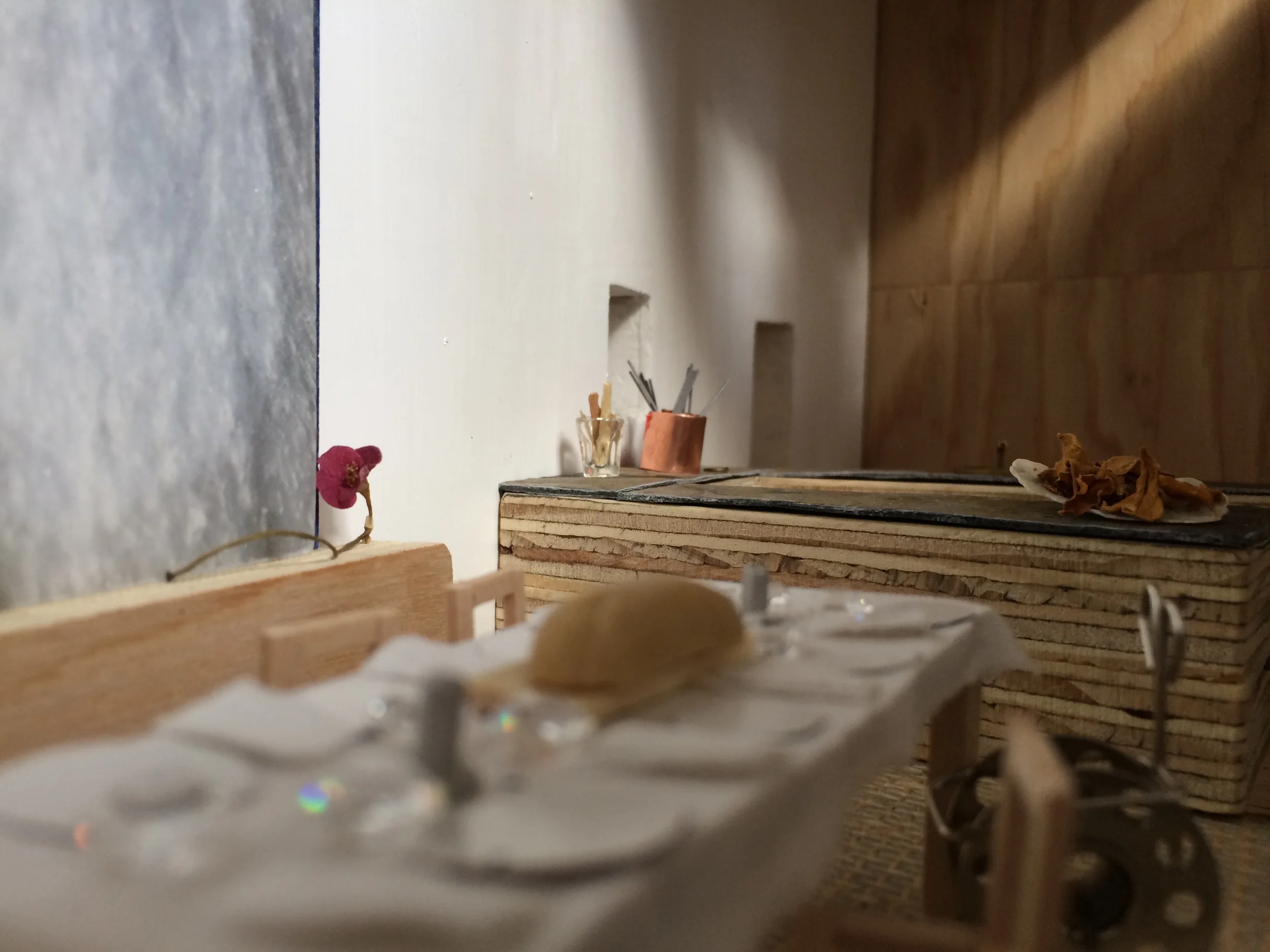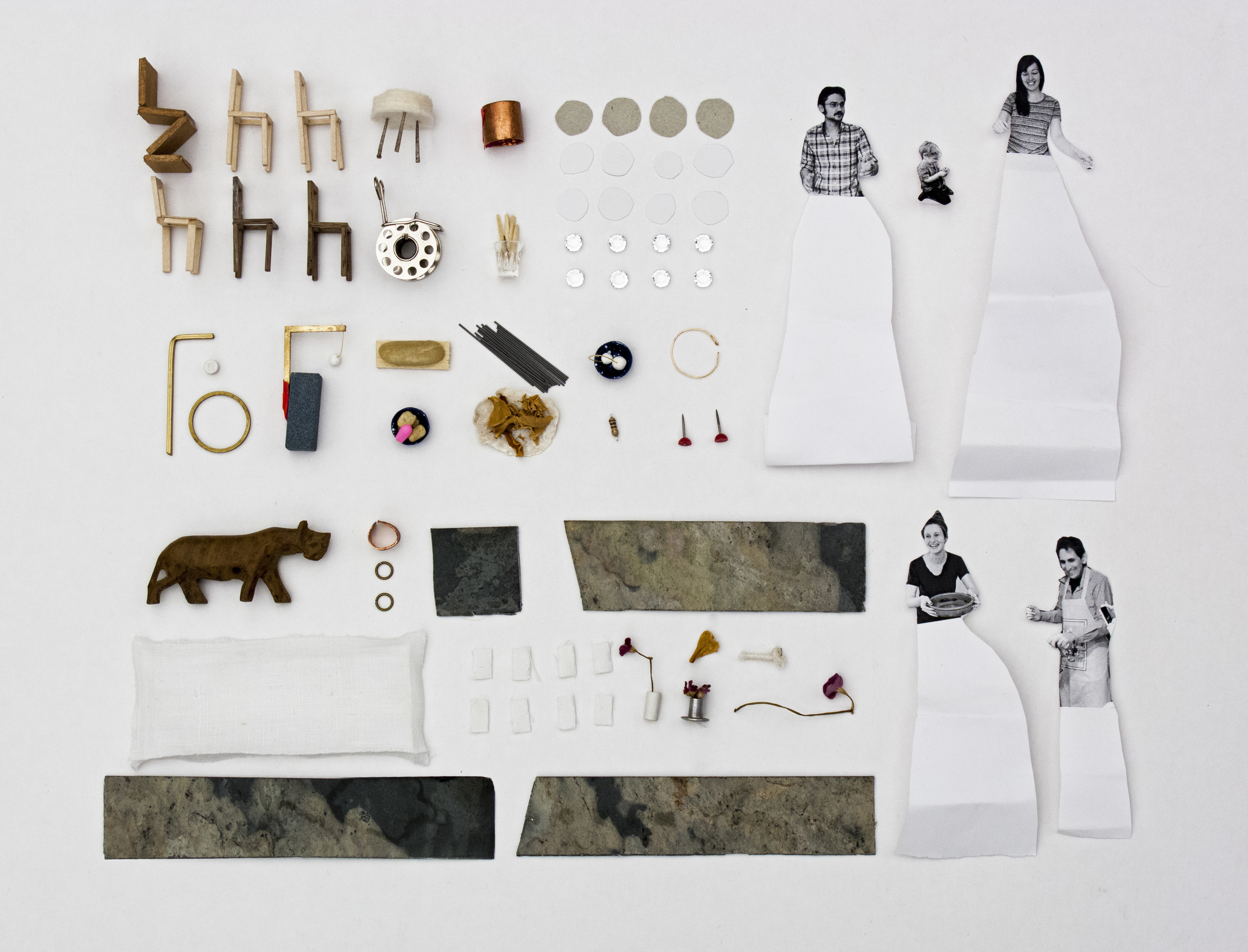KITCHEN LIVING in the multigenerational home
a provocation by Metropolis Magazine
Kitchen dining is where culture is formed, where histories are transferred and where family identity evolves.
In a culture where there is a plethora of social interaction but meaningful relations are sporadic, virtual or displaced, the multigenerational kitchen offers a foundation for physical, social and historical connection. Cultural exchange happens here.
The stage is set with a kitchen adjacent to the dining table. Natural light is abundant. Rooms are furnished by the middle generation with plenty of space for keeping important objects. The older generations bring important things – objects that carry stories, traditions and culture.
The table is large enough for everyone to gather, but casual enough to be used for children to work on projects while others do occasional work. One or two people can comfortably have breakfast or a late night snack. During a holiday the table is set with family linen, candlesticks and crystal. Extended family members gather in the multigenerational home.
Everyday the table is the nexus of activity. It is the place where coffee is sipped, news is read from digital tablets and paper, music videos are shared and software is taught to the elders. There are new things and old things. It is a place for daily encounters.
The kitchen dining table is an incubator of culture. It is where manners are cultivated. It's the place where people connect, where children learn to socialize. Stories are shared. Histories are told. It's where values are transferred and understanding evolves. Family traditions are practiced and new traditions are born.
Memories and associations are created here. The scent of fish stew is inhaled to become a future memory. The preparation of bourbon soaked sugar cubes for the special Christmas drink is on center stage once each year. The ritual of setting a table is taught, and repeated. Stories of water conservation are discussed while doing the dishes. The comforts of steeped tea or brewed coffee or a glass of milk are satisfied.
In the multigenerational kitchen, objects brought from one generation provide for the next generation. Children learn from these things - the coffee pot, the dish for fish stew, the heirloom linen dishcloth. They are the things of life and here they each come with a story. Culture is nourished here. Values are exchanged. Family identity is cultivated.
WE SPOKE WITH FIVE PEOPLE ABOUT KITCHEN OBJECTS THAT HAVE REMAINED IN THE FAMILY FOR GENERATIONS.
COFFEE POT J.Ruth
This pot belonged to my great-grandmother. She spent almost every day of her life in the kitchen. When family came to visit, the coffee pot filled their cups. Everyone would sit at her kitchen table talking for hours, while she listened quietly in the background. When my grandmother (at age 65) moved out of their shared house and into a small apartment in Manhattan, she took her mothers coffee pot with her. She treasured it even though she didn't drink coffee. I took it to our house when she was gone. Now people sit around our table when I make coffee in this pot.
DESSERT PLATES J. Frank
These plates belonged to my grandmother. We used them for dessert at thanksgiving when everyone went 'home' to her house for our annual reunion. Since I was small she let me set the table with her, following her strict guidance. I was always excited to take this stack off the high shelf, remove the felt pad from between each plate and place them on the table. Every year the family ate her special ice cream cake with meringue from these plates.
SCOLAPASTA L. Di Cintio
This is my mothers. Its the one she got when she married my father. When my mom's family came to Canada there was nothing to "scola la pasta" (strain the pasta). The holes were too small here. My grandfather had to make one for my grandmother. By the time my mother got married scolapastas could be found in the Italian grocers - imported from Italy. This is the original one. the one she bought when she was 25. It's the one we grew up using. She never bought another one. She used it until her alzhiemers kicked in and I have it now. When we had to clear her house, I brought it to my house.
GLOGG POT S. Finney
This heavy cast aluminum soup pot belonged to my mother. My grandmother used it to make swedish rye bread and yeast rolls. She put the dough in it and placed it near the register for the bread to rise. My parents used it as the "glogg pot" (Glogg is Swedish mulled wine). Fifteen years ago, when we took over christmas, the pot came to our house. I have used it for bread dough and for glogg. This winter, during the below zero days, we filled it with water and put it on the wood stove to add humidity to the air.
CASOLA DE FANG C. Noguer
We use this traditional ceramic pot to cook Suquet - a catalan fish stew. The recipes require time, so we associate this pot with special occasions. My father and my uncle are known as good Suquet makers and I inherited the skills for future generations (maybe because of the lack of young males in the family). It's very important to keep the same pot as long as possible because somehow the more one uses it the better the suquet tastes. There is no exact recipe for it, it relates to what's available at the fish market, which is part of the ritual of making too.
KITCHEN TOWEL L. Yoneno
This typical dutch kitchen towel is one that my grandmother always used. My mom, my brother and I all use the same ones. Using it reminds me of doing dishes in my grandmothers house on summer vacations in Holland. One person would always be the dryer and talk to the person doing the washing. My grandmother was a very economical woman and had a special technique to wash all dinner dishes using just two basins of water.
















